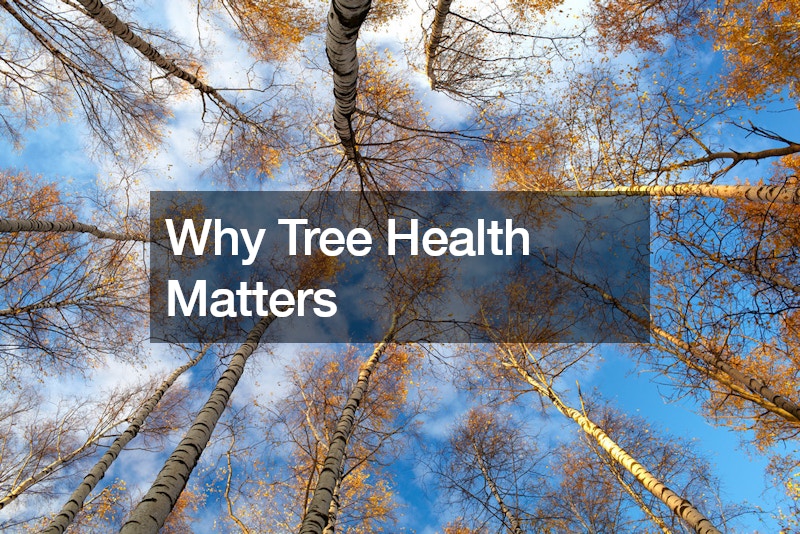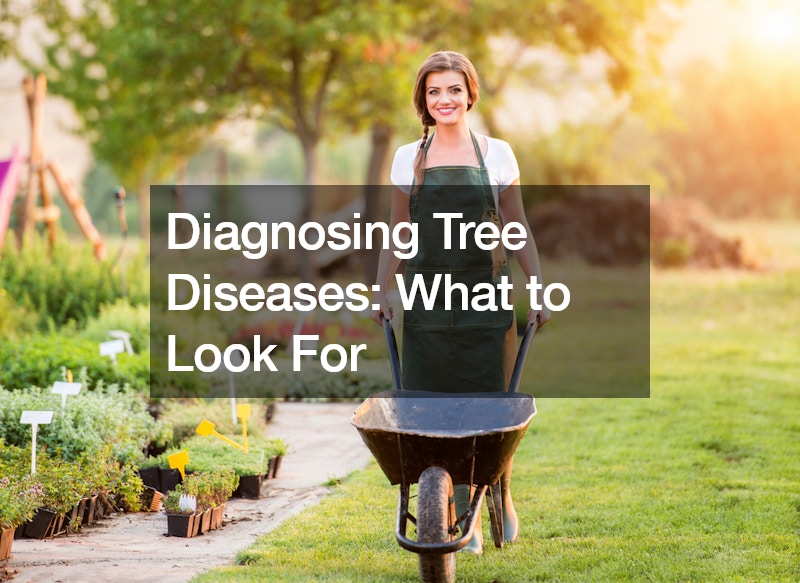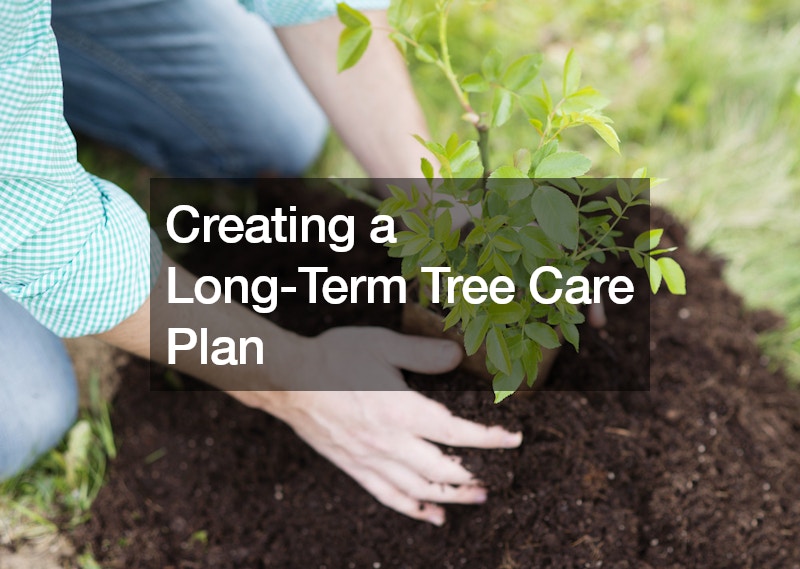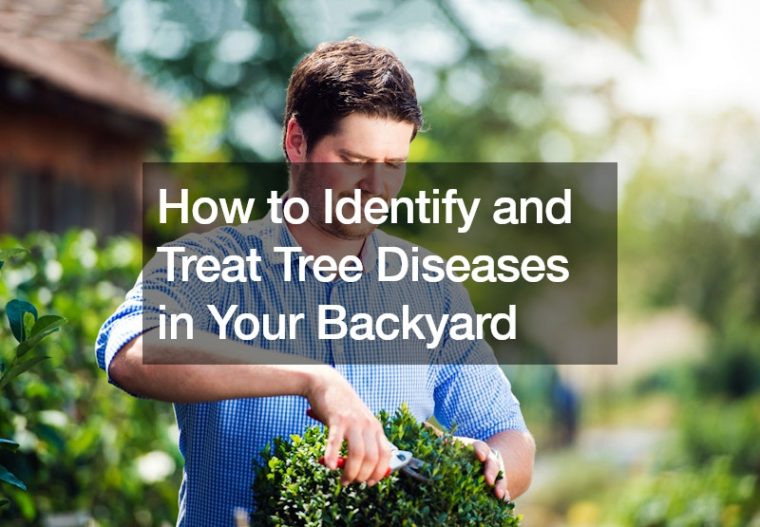
Trees are vital components of our natural environment and contribute significantly to the beauty, health, and sustainability of our ecosystems. Ensuring that our trees remain healthy and free of disease is crucial for maintaining the ecological balance and supporting wildlife. Various factors such as pollution, climate change, and human activity can negatively impact tree health. Hence, it is essential to understand the different aspects of tree care, disease prevention, and treatment options to create a long-term plan for maintaining healthy trees. This article will provide a comprehensive guide to tree health and disease management, discussing why tree health matters, common tree diseases, inspection, diagnosis, treatment, and prevention.
Why Tree Health Matters

Healthy trees offer numerous benefits, from enhancing the visual appeal of landscapes to providing shade and improving air quality. Proper tree care is essential for preventing the spread of diseases and pests to other plants and trees in the vicinity. Tree service providers often emphasize the importance of tree health to ensure that communities continue to enjoy the benefits of a vibrant, green environment.
When you treat trees effectively, you contribute to the overall health of the ecosystem. Trees play a critical role in reducing carbon dioxide levels and producing oxygen, which is vital for combating climate change. They also act as natural air filters, improving air quality by trapping dust and pollutants. Additionally, well-maintained trees can help mitigate the urban heat island effect by providing shade, which lowers temperatures and reduces energy consumption for cooling homes.
A healthy tree can also act as a natural barrier, reducing the risk of soil erosion and providing habitat for various wildlife species, which supports biodiversity. Beyond environmental benefits, healthy trees increase property value and enhance the beauty of both residential and commercial properties. Engaging with a local tree service can ensure your trees are well-cared for, reducing the risk of diseases, structural issues, or dangerous conditions that may lead to costly removal or extensive treatments later on. By prioritizing tree health, you help maintain a beautiful and functional landscape for years to come.
Understanding Common Tree Diseases
To effectively treat tree diseases, it is essential to understand the most common ones that could affect your trees. Diseases such as Dutch elm disease, chestnut blight, and oak wilt can cause significant damage if not promptly addressed. Local tree removal companies frequently encounter these diseases and have the expertise to identify and treat them.
By recognizing the symptoms early, you can manage tree diseases before they become severe or spread to other trees. Symptoms such as discolored leaves, wilting branches, and unusual growth patterns can indicate a problem that needs attention. Additionally, pest infestations like aphids or scale insects can exacerbate disease conditions and should be monitored.
Consulting with professionals from a local tree removal company can help you determine the appropriate treatment steps and provide targeted solutions. They use advanced diagnostic tools and methods to assess the extent of the disease and recommend effective treatments, such as pruning diseased branches, applying fungicides, or improving soil health. Regular maintenance and periodic inspections by a tree care expert can also prevent the onset of severe tree diseases and promote long-term tree health. By staying proactive, you can ensure that your trees remain healthy and resilient throughout the year.
Inspecting Your Trees: Signs of Disease
Regular inspection of your trees is crucial in maintaining their health and vitality. Look for signs such as discolored leaves, unusual growth patterns, and signs of pest infestations. A local tree business can offer inspection services to identify potential issues early on, ensuring that you can address problems before they escalate.
When you treat tree issues promptly, you reduce the risk of diseases spreading to other parts of your garden or landscape. In addition to dead or decaying branches, oozing sap, and fungal growth, also check for wilting leaves, root problems, and branch dieback. These are clear indicators of tree diseases that require immediate attention.
Many local tree businesses offer comprehensive tree inspection services to detect signs of disease and recommend appropriate treatments. They use specialized equipment and techniques to assess tree health, identify pest infestations, and diagnose diseases accurately. Regular inspections help you stay proactive in maintaining tree health, preventing future issues, and ensuring the long-term beauty and strength of your trees.
Diagnosing Tree Diseases: What to Look For

Diagnosing tree diseases involves looking for specific symptoms and understanding the environmental conditions contributing to the disease. Tree care companies are adept at identifying diseases based on visible symptoms and environmental assessments, which can help prevent minor issues from escalating into severe problems. Recognizing the signs early can make the difference between saving or losing a tree.
You can treat tree diseases effectively by understanding common symptoms such as leaf spots, cankers, and dieback. Other signs to look for include abnormal leaf sizes, premature leaf drop, unusual bark changes, and stunted growth. Additionally, check for any changes in tree growth patterns or the presence of insect infestations, as these can often accompany tree diseases.
Consulting with tree care companies can help you gain better insights into diagnosing tree diseases and understanding potential causes, such as poor soil conditions or inadequate watering practices. Professional arborists utilize advanced diagnostic tools and techniques, including visual inspections, soil tests, and laboratory analysis of samples, to provide a precise diagnosis and effective treatment strategies. Correctly diagnosing the disease ensures that you can address it with the most appropriate methods, such as targeted treatments, proper pruning, or environmental adjustments, ultimately preserving your tree’s health and longevity.
Using Natural Remedies for Tree Diseases
Natural remedies can be an effective and environmentally friendly way to treat tree diseases. Methods such as neem oil, compost tea, and beneficial fungi can combat various tree ailments. Engaging with a reputable tree company can guide you on how to use these natural solutions effectively.
When you treat tree diseases naturally, you not only address the illness but also improve the overall health of the soil and surrounding environment. Natural remedies often have fewer side effects and are safer for other plants and wildlife. Consulting with an expert from a tree company can ensure you’re using the best natural methods for your specific needs.
Using natural remedies helps in sustaining biodiversity and maintaining ecological balance. Techniques like mulching and proper watering can prevent diseases from taking hold in the first place. A tree company’s expertise can be invaluable in creating a comprehensive plan to treat tree diseases naturally.
When to Call a Professional Arborist
Knowing when to call a professional arborist can be crucial in managing tree health effectively. Arborists have specialized knowledge, advanced equipment, and experience to diagnose and treat complex tree diseases and structural issues. A reputable tree removal company often employs certified arborists who can offer expert advice, perform precise diagnostics, and implement effective treatment plans.
You should treat tree issues promptly and contact an arborist if you notice significant symptoms like extensive dieback, large cankers, deep wounds, or unusual fungal growth. Additionally, if you observe branches hanging dangerously, stunted growth, or signs of severe pest infestations, it’s time to seek professional help. Arborists can perform restorative pruning, provide soil and nutrient support, and apply targeted treatments to restore tree health and prevent further damage.
A professional arborist can provide a thorough inspection, diagnose complex issues, and recommend advanced treatments such as specialized fungicides, pest control methods, and structural support solutions. Tree removal companies frequently offer comprehensive arborist services to address severe cases and ensure the long-term health of your trees. Timely intervention by a professional can often make the difference between needing to remove a tree and successfully rehabilitating it, preserving both the aesthetic and ecological value of your landscape.
Using Chemical Treatments: When and How

Chemical treatments can be a valuable tool in managing severe tree diseases when natural remedies and basic interventions fail. Knowing when and how to use these treatments is essential to avoid harming the tree or the surrounding environment. Stump removal services and tree removal companies often have the expertise to recommend and apply chemical treatments safely.
When you treat tree diseases with chemical treatments, it’s crucial to follow recommended guidelines and apply the correct dosages. Misapplication can lead to further health issues for your trees and potentially harm other plants. Consulting with a tree removal company can help ensure that you’re using chemical treatments responsibly and effectively.
Chemical treatments should be considered as a last resort after exploring all other possible solutions. They can be particularly useful in treating invasive diseases and controlling insect infestations. Always consult with professionals to ensure the chemical treatment aligns with best practices for maintaining tree health.
Preventative Measures for Tree Disease
Preventative measures are crucial in maintaining tree health and avoiding the onset of diseases. Regular pruning, proper watering, and soil conditioning are effective ways to enhance tree immunity and prevent diseases from taking hold. Local tree removal services and arborists can offer expert advice and services to implement these preventative strategies effectively.
By employing preventative measures, you can address potential issues before they develop into serious diseases. Ensuring proper spacing between trees, applying mulch, and monitoring water levels are key practices that help prevent common tree diseases. Additionally, regularly inspecting trees for early signs of pests and diseases and choosing disease-resistant tree species can further safeguard your trees’ health.
Local tree care services can guide you through best practices for maintaining a disease-free environment and offer solutions such as tree fertilization, integrated pest management, and professional inspections. Preventative care is often more cost-effective and efficient than treating advanced diseases. Establishing a health regimen tailored to your tree species and local conditions can significantly reduce the risk of disease and extend the life of your trees. Engaging with local tree removal services helps you develop a comprehensive tree care plan that ensures long-term health and vitality for your trees.
Proper Tree Pruning Techniques for Disease Management
Proper pruning is vital for managing tree health and preventing diseases. Techniques such as removing dead or diseased branches can significantly reduce the risk of disease spread. Consulting a professional tree service can provide insights into proper pruning techniques tailored to your tree species.
When you treat tree diseases through pruning, it’s essential to use sterilized tools to avoid cross-contamination. Pruning should be done during dormant seasons to minimize stress on the tree. A tree service can help you determine the best times and methods for effective pruning.
Proper pruning enhances tree shape, improves air circulation, and increases sunlight penetration, all of which are essential for disease prevention. Regular pruning also helps in the early detection of potential issues, allowing timely intervention. Engaging with a local tree care service can offer expert pruning services to keep your trees in optimal health.
Creating a Long-Term Tree Care Plan

A long-term tree care plan is essential for sustained tree health and vitality. This plan should encompass regular inspections, timely treatments, and preventative measures. Local tree care experts can assist in developing a comprehensive plan tailored to the specific needs of your trees.
To effectively maintain tree health over the long term, incorporate practices such as regular nutritional support, soil conditioning, and appropriate watering. Regular assessments by professionals can help adapt the care plan based on changes in tree health and environmental conditions. The advice and services of local tree care providers can be invaluable in maintaining a thriving garden or landscape.
A long-term tree care plan ensures that trees remain an integral part of a healthy and visually appealing environment. Scheduling regular maintenance and staying vigilant about potential issues can prevent costly treatments and tree loss. Local tree care experts can guide you in creating and maintaining a robust long-term plan to keep your trees healthy and disease-free.
Maintaining tree health and managing tree diseases effectively requires a comprehensive understanding of various prevention and treatment methods. From recognizing the importance of tree health to diagnosing and treating diseases, each step is crucial for ensuring trees continue to thrive. Collaborating with local tree services and tree care companies can provide the expertise needed to address tree health challenges. Whether it is using natural remedies, employing chemical treatments, or calling professional arborists, timely and appropriate actions are vital. A long-term tree care plan, encompassing regular inspections and preventative measures, can help in keeping trees healthy for years to come. Embrace these practices to treat tree diseases effectively and maintain a beautiful, robust natural environment.
